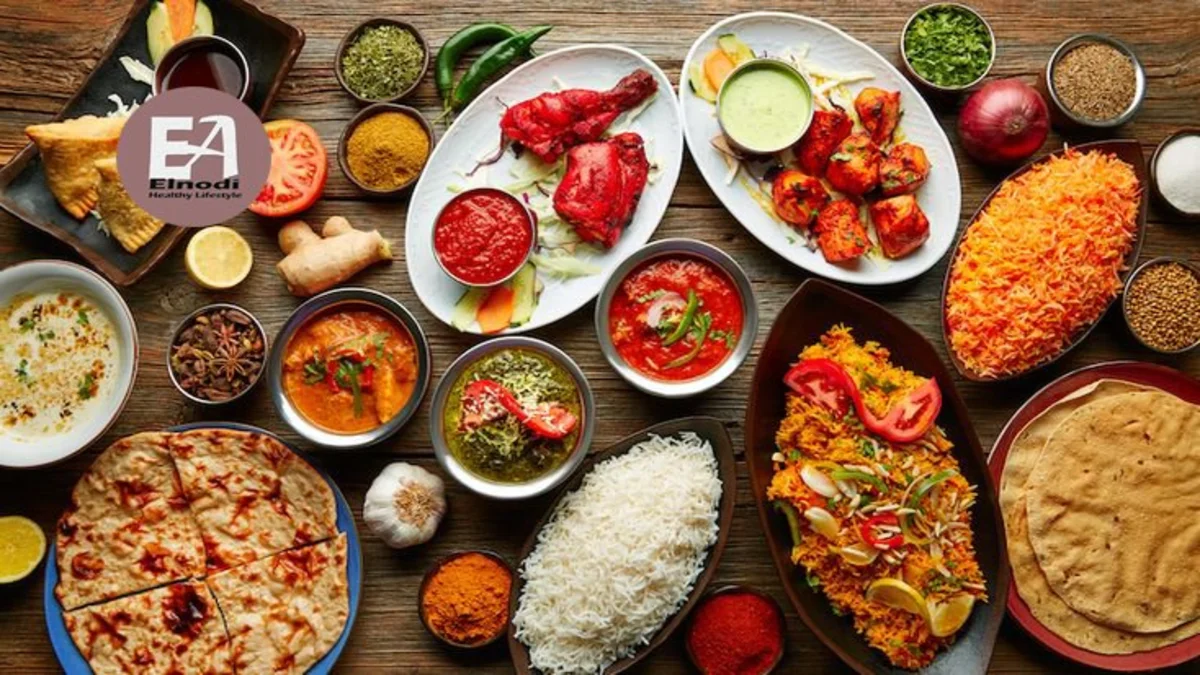Explore the diversity of cultural foods and how they can enrich your healthy eating habits. Learn how to incorporate these flavorful and nutritious options into your diet.
Food is not just about sustenance; it is also a reflection of our cultural identity and heritage. Embracing cultural foods can help us connect with our roots and traditions while also promoting health and well-being. With the rise of globalization, it is important to recognize and celebrate the diversity of cuisines and flavors that exist around the world.
What do cultural foods consist of?
Traditional dishes, known as cultural foods, embody the customs, values, and rituals of specific geographic areas, ethnicities, religions, or diverse cultural groups.
Cultural foods reflect beliefs on food preparation and usage, often symbolizing the broader culture of a group.
The traditions and recipes are handed down to each new generation.
Cultural foods can showcase a specific region, like the Italian staples of pizza, pasta, and tomato sauce, or Asian favorites like kimchi, seaweed, and dim sum.
They can also reflect a colonial history, as seen in the blending of West African and East Indian culinary influences across the Caribbean.
Integration of cultural cuisines within the Western system is essential
Eating healthily involves cultural cuisine, but this idea isn’t emphasized and often gets overlooked.
The dietary guidelines set by the U.S. Department of Agriculture (USDA) are highly regarded in the West for promoting healthy nutrition.
They emphasize the importance of considering individuals’ cultural food traditions and preferences.
The emphasis on culture and food traditions for healthy eating is highlighted in the Canadian Food Guide.
The field of dietetics must continue working to ensure cultural competence, and effectively and appropriately treat individuals without bias, prejudice, or stereotypes.
While training as a dietitian, we recognized cultural needs and food practices, but there was little focus on practical application or interest.
At times, healthcare professionals lacked institutional resources.
What does a nutritious diet appear like?
Healthy eating means consuming a mix of nutrients from dairy, protein, grains, fruits, and vegetables, which are referred to as the five food groups in the United States.
Each food group offers necessary vitamins and minerals crucial for maintaining good health. MyPlate from the USDA, a replacement for the food pyramid, shows that a balanced plate comprises fifty percent nonstarchy vegetables, twenty-five percent protein, and twenty-five percent grains.
The Caribbean mixes staples (starchy, carb-rich foods), animal-based foods, legumes, fruits, vegetables, and fats or oils from six different food groups.
Classic one-pot meals may not always be easily separated on a plate.
Instead, various food groups are mixed into one delicious dish.
For instance, Oil Down, a classic one-pot meal, features breadfruit (the main ingredient – a starchy fruit with a bread-like texture when cooked), along with leafy greens such as spinach and carrots, and protein options such as chicken, fish, or pork.
Healthy eating is more flexible than online portrayals suggest
Cravings for specific foods often stem from effective marketing strategies that overlook cultural diversity, usually favoring a Eurocentric perspective.
An example of this is when you search for “healthy eating,” you’ll find various lists and pictures of asparagus, blueberries, and Atlantic salmon, frequently shown with a white family holding them or having them on their dining tables.
The absence of diverse cultural representation in food illustrations hints that local and cultural foods might not be good for you.
True healthy eating is a flexible concept that does not require a specific appearance or ethnic background, nor does it need specific foods to be considered valid.
These are the foods commonly featured on Western health websites, along with their traditional food equivalents.
- Kale is healthy, and so are dasheen bush (taro leaves) and spinach.
- Quinoa offers great protein and fiber, whereas rice and beans do too.
- Skinless chicken breast is often praised as a lean meat essential for a balanced diet, yet other cuts of chicken without the skin are also low in fat and rich in iron.
- Atlantic salmon contains omega-3 fatty acids, as do local salmon types and fatty fish like sardines.
In your area, not having access to kale, quinoa, and Atlantic salmon doesn’t mean your diet is bad.
Despite what popular health advice suggests, a nutritious meal isn’t only about Eurocentric ingredients, and local foods are not lesser in quality or nutrition.
Healthy eating varies within different communities and regions due to food availability, environmental impact, and culinary traditions.
Cultural foods’ importance in our daily life
Cultural foods and traditional food practices establish a strong link to community and healthcare, bridging the gap between our roots, encouraging social interactions, and forming lasting memories.
Additionally, they significantly impact adherence to dietary guidelines and achievement of health goals.
While learning how to make oil down from my mother, a dish including breadfruit, taro leaves, pumpkin, coconut milk, and smoked bones, I engage with our ancestral food customs from West Africa and create meaningful family memories.
In the same way, I feel a connection to East Indian food customs when I whip up a meatless curry like dhal (split peas) seasoned with turmeric or saffron.
To those unfamiliar with them, these meals may not align with the typical Western view of nutritious or healthy food, yet they contain fiber, complex carbs, and vegetables.
How does culture influence your food choices?
Culture shapes the food choices you make, your religious beliefs and rituals, and your views on health, recovery, and medical treatment.
Studies indicate that your cultural background significantly shapes your thoughts about specific foods and your openness to trying new ones.
Furthermore, your cultural background is closely tied to how you define food and what falls outside that category.
Healthy eating should be understood in the context of culture.
In the United States, dinner is typically the main meal of the day, with lunch usually consisting of a light salad or sandwich. Conversely, in the Caribbean, lunch tends to be the heaviest meal, with dinner being lighter and often resembling breakfast.
Nutrition messaging and counseling suffer when they lack inclusivity, diversity, and understanding, diluting the science and depriving communities of diverse culinary insights and experiences.
Additionally, lacking trust and effective communication between a dietitian and their clients could lead to health gaps and unfavorable health results.
Lacking trust in your dietitian can decrease your chances of following their advice.
What’s next?
It’s important to keep in mind that cultural foods can align with healthy eating principles, regardless of whether they have been gentrified, popularized on social media, or follow the Western paradigm.
Comfort foods, essential aspects of daily living, and crucial nutritional resources for numerous immigrant and non-immigrant families in the United States.
The cultural foods showcase nutritious eating by blending different food groups and incorporating a range of essential nutrients:
- Tanzania features ugali, a key dish prepared with cornmeal, commonly accompanying authentic meat and vegetable meals.
- Ema datshi is a well-loved Bhutanese dish, consisting of a spicy stew served with yak cheese and possibly mushrooms, green beans, and potatoes.
- Kalua pork, a traditional Hawaiian dish, can accompany grilled fish, eggplant, or taro.
- Roasted pork known as Schäufele, coated in German beer, is commonly enjoyed alongside potato dumplings and sauerkraut or creamed savoy cabbage.
- Popular in the Caribbean, pelau is a flavorful one-pot meal that features caramelized chicken, parboiled rice, pigeon peas, and a variety of vegetables along with green seasonings.
Summary
Healthy eating involves consuming various nutrient-rich food groups to promote overall well-being.
Despite what mainstream health and wellness advice says, healthy eating varies among different communities and regions.
It doesn’t have a set appearance or necessitate specific foods.
While the dietary guidelines in America and Canada promote the integration of cultural foods into a healthy diet, the messaging and advice on nutrition frequently fall short of effectively highlighting the significance of cultural foods.
FAQs
What are examples of popular culture foods?
What is a cultural cuisine?
Cuisine refers to a culture’s culinary and eating customs. What distinguishes a certain culture’s cuisine? Potatoes, yucca, and corn, for example, are common ingredients in Peruvian cuisine.
What is the popular food culture?
Popular food cultures around the world include French, Spanish, Italian, Chinese, Japanese, Indian, and American.
Why can’t Muslims eat pork?
In Abrahamic religions, eating pig flesh is prohibited by Jewish (kashrut), Islamic (halal), and Adventist (kosher animal) dietary restrictions. Pigs are considered unclean animals as food in Judaism, Islam, and some branches of Christianity.





